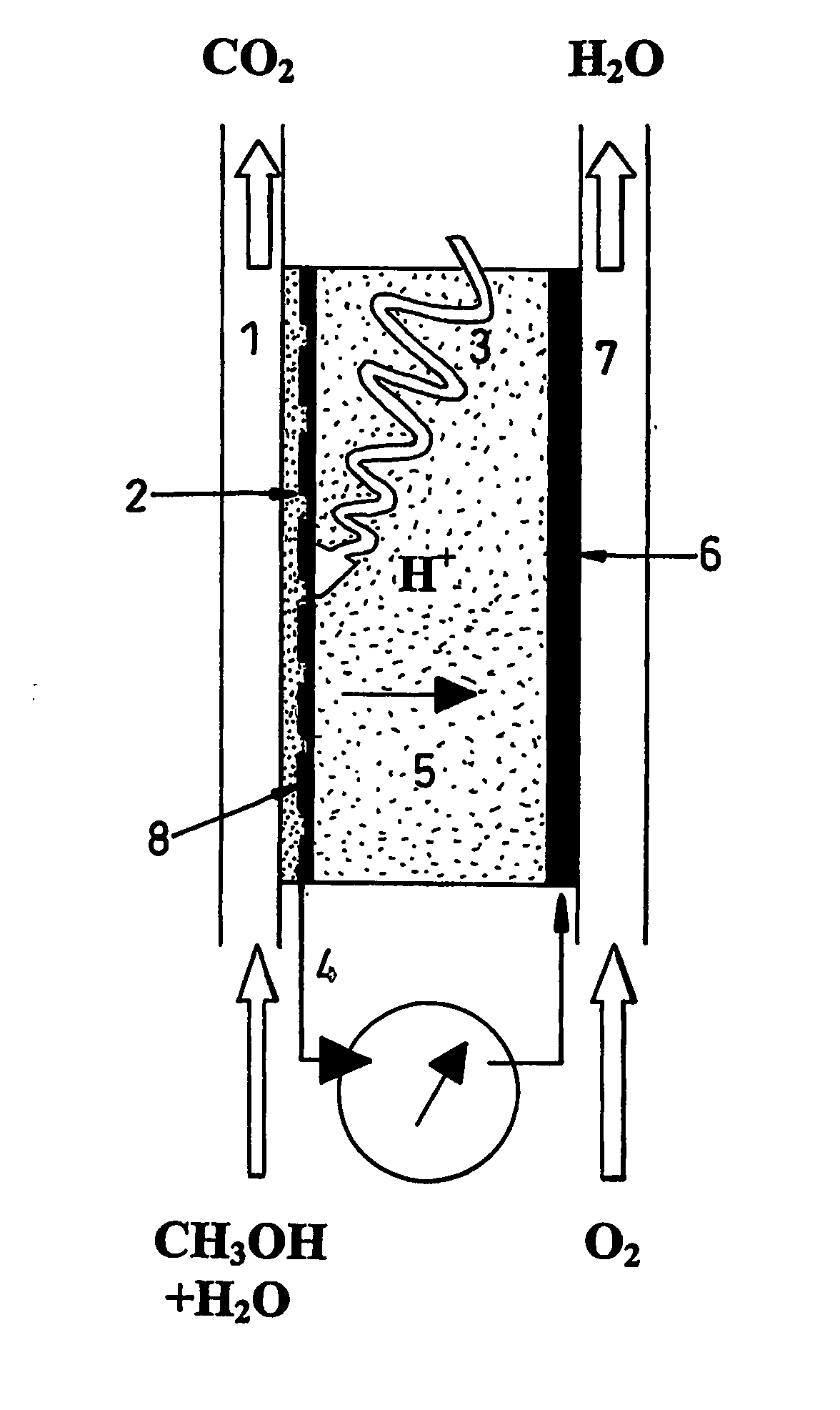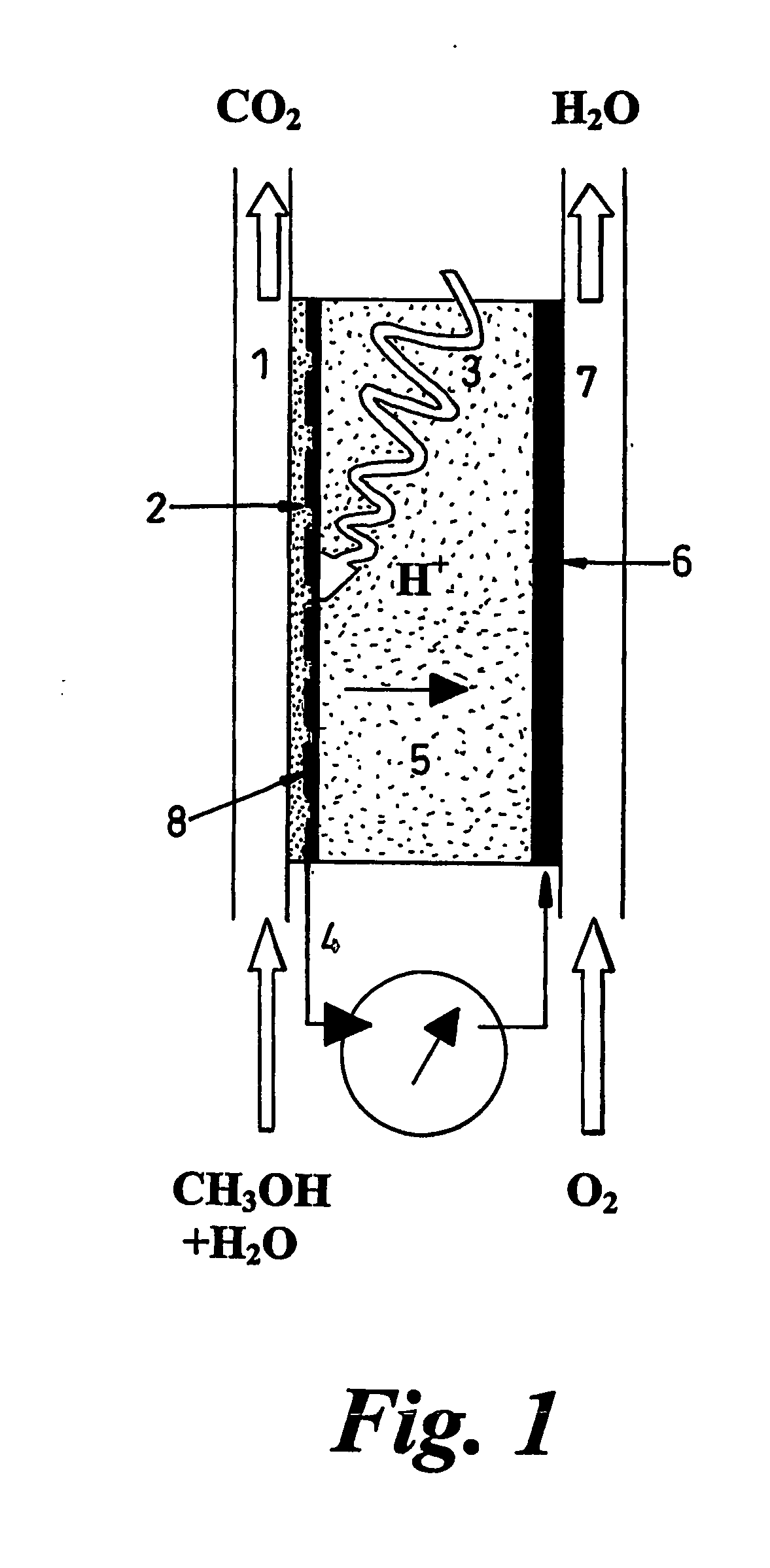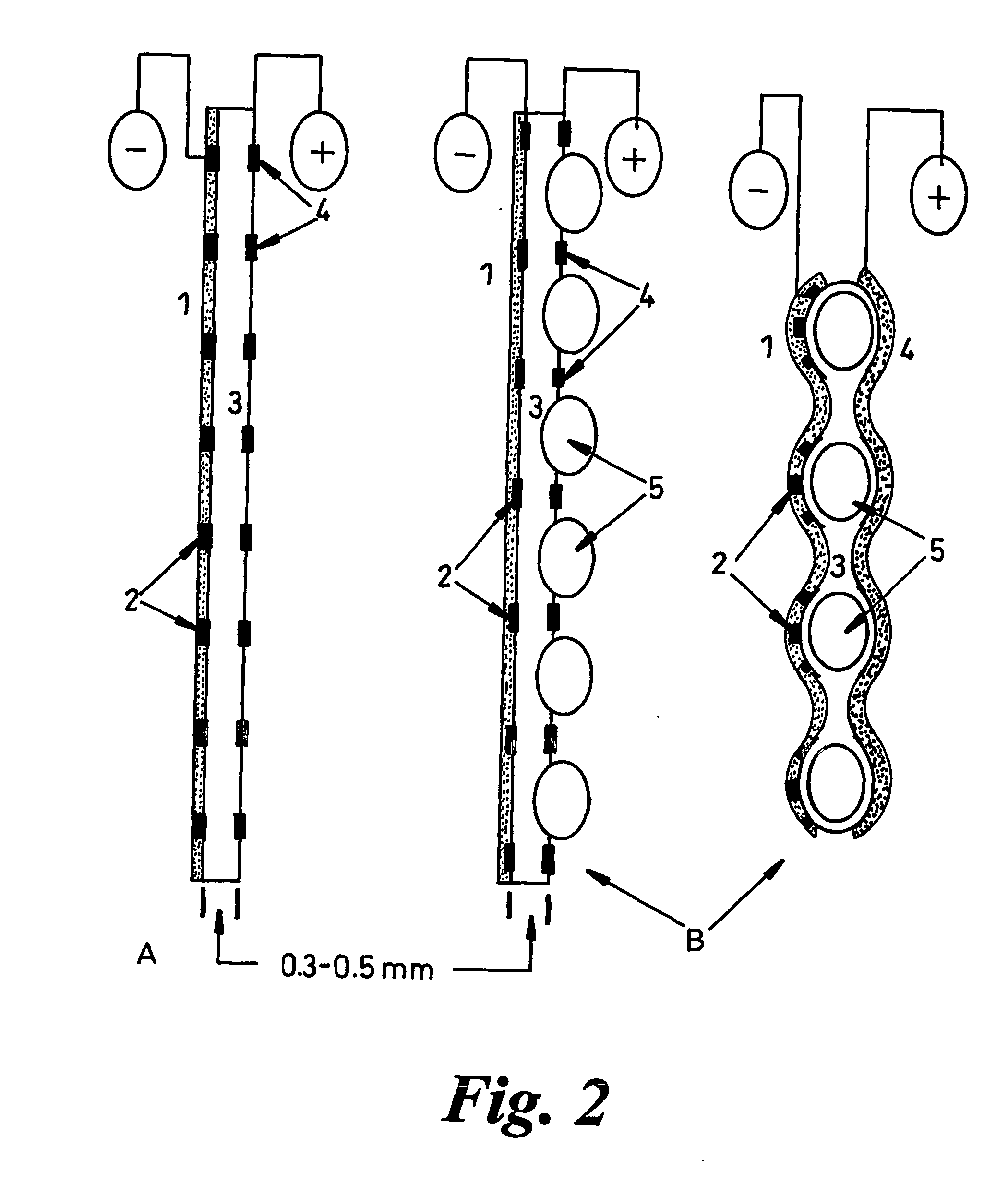Photo-catalytic reactor
a photocatalytic reactor and photocatalytic technology, applied in the direction of electrochemical generators, cell components, cell component details, etc., can solve the problems of high purification of fuel, poor performance, loss of efficiency, etc., and achieve the effect of generating useable energy
- Summary
- Abstract
- Description
- Claims
- Application Information
AI Technical Summary
Benefits of technology
Problems solved by technology
Method used
Image
Examples
Embodiment Construction
[0056] The fuel cell of the present invention will now be described by way of example in terms of a cell that uses methanol as the fuel, and performs as a photocatalytic reactor wherein the fuel is oxidised at the anode, releasing protons, but it will be understood that other fuels may be adopted, and that organic contaminants in fluids e.g. oil-polluted water can serve as “fuel”.
[0057] The fuel cell comprises electrodes and proton-conducting membrane units as illustrated in FIG. 2. Perforated, porous or grid electrodes ensure that charge carriers can transit across all interfaces and that all electrical contacts within the electrochemical cell are continuous so that one external connection to a mesh or foraminated metallic sheet will be sufficient (see FIG. 2), but multiple connections are not excluded. The photocatalyst (1) can be dip-coated or applied by other means onto the previously fabricated proton conducting membrane (PCM) (3) having a platinum, or other electronically con...
PUM
| Property | Measurement | Unit |
|---|---|---|
| thickness | aaaaa | aaaaa |
| conductivity | aaaaa | aaaaa |
| thick | aaaaa | aaaaa |
Abstract
Description
Claims
Application Information
 Login to View More
Login to View More - R&D
- Intellectual Property
- Life Sciences
- Materials
- Tech Scout
- Unparalleled Data Quality
- Higher Quality Content
- 60% Fewer Hallucinations
Browse by: Latest US Patents, China's latest patents, Technical Efficacy Thesaurus, Application Domain, Technology Topic, Popular Technical Reports.
© 2025 PatSnap. All rights reserved.Legal|Privacy policy|Modern Slavery Act Transparency Statement|Sitemap|About US| Contact US: help@patsnap.com



